One way to gear up for winter is by heating the garage. Now, are you planning to install a garage heater but don't know how many BTU you need? We gathered data that might answer your question, and here is what we discovered.
The amount of BTU needed to heat a garage per square foot for warm, average, and cold climates is 30, 45, and 60 respectively. With that said, here are the BTU needed for a 1, 2, 3, and 4-car garage:
- 1-car garage (250 ft²) - 7500 BTU (warm); 11, 750 BTU (average); 15,000 BTU (cold)
- 2-car garage (500 ft²)- 15,000 BTU (warm); 22,500 BTU (average); 30,000 BTU (cold)
- 3-car garage (750 ft²)- 22,500 BTU (warm); 34,250 BTU (average); 45,000 BTU (cold)
- 4-car garage (1,000 ft²)- 30,000 BTU (warm); 45,000 BTU (average); 60,000 BTU (cold)
Keep reading as we discuss possible garage heating options you can choose from, factors to consider if you want to install a garage heater, and the benefits of investing in a garage heating system.
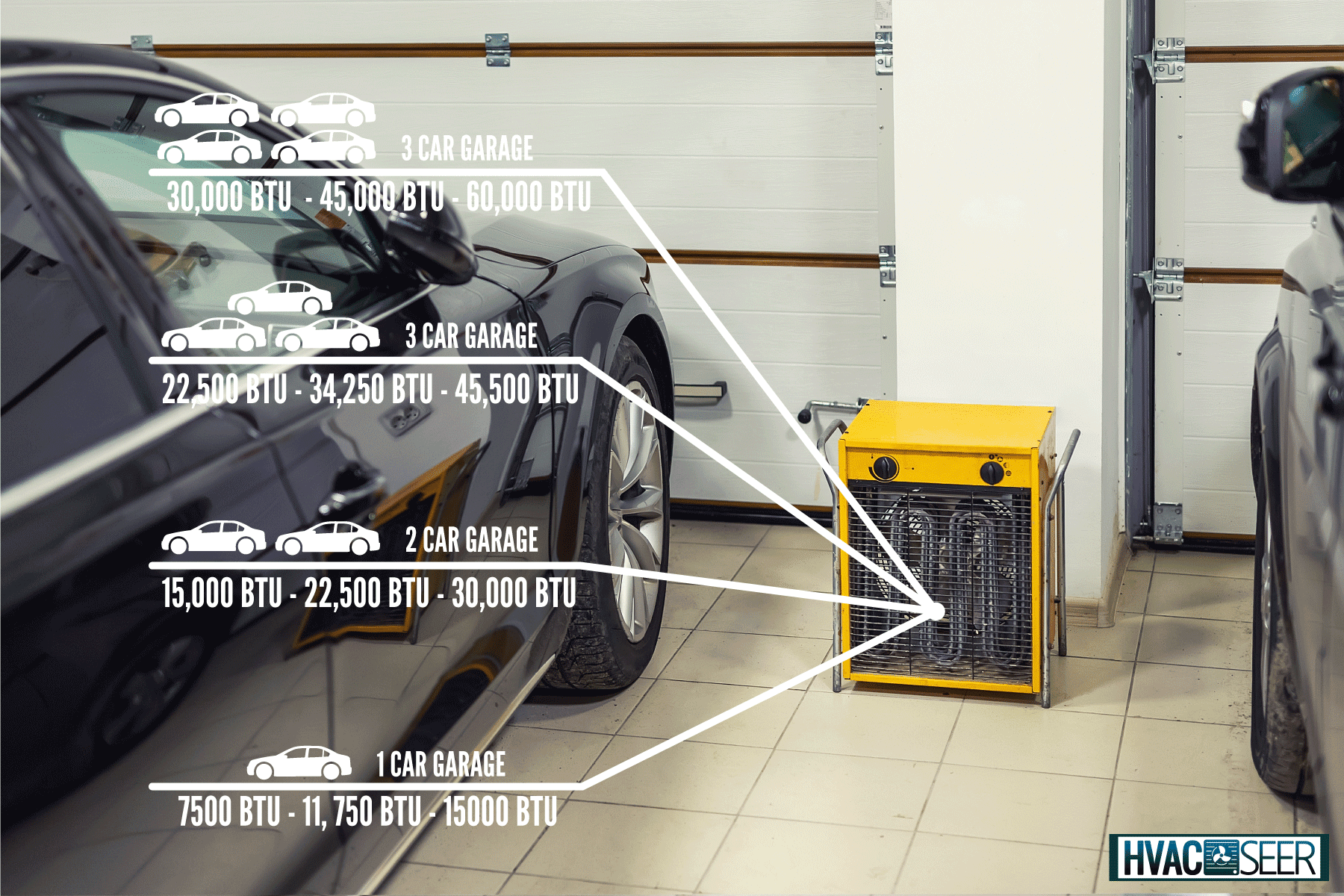
Garage Heating Systems To Choose From
Your garage will be warm and pleasant in no time if you use the correct heating options. Consider these heating system options if you want to spend more time working in your garage during the winter or whenever it's cold.
- Insulation Installation
- Gas and Liquid Fuel Heaters
- Wood Stoves
- Electric Heaters
- Central HVAC Extension
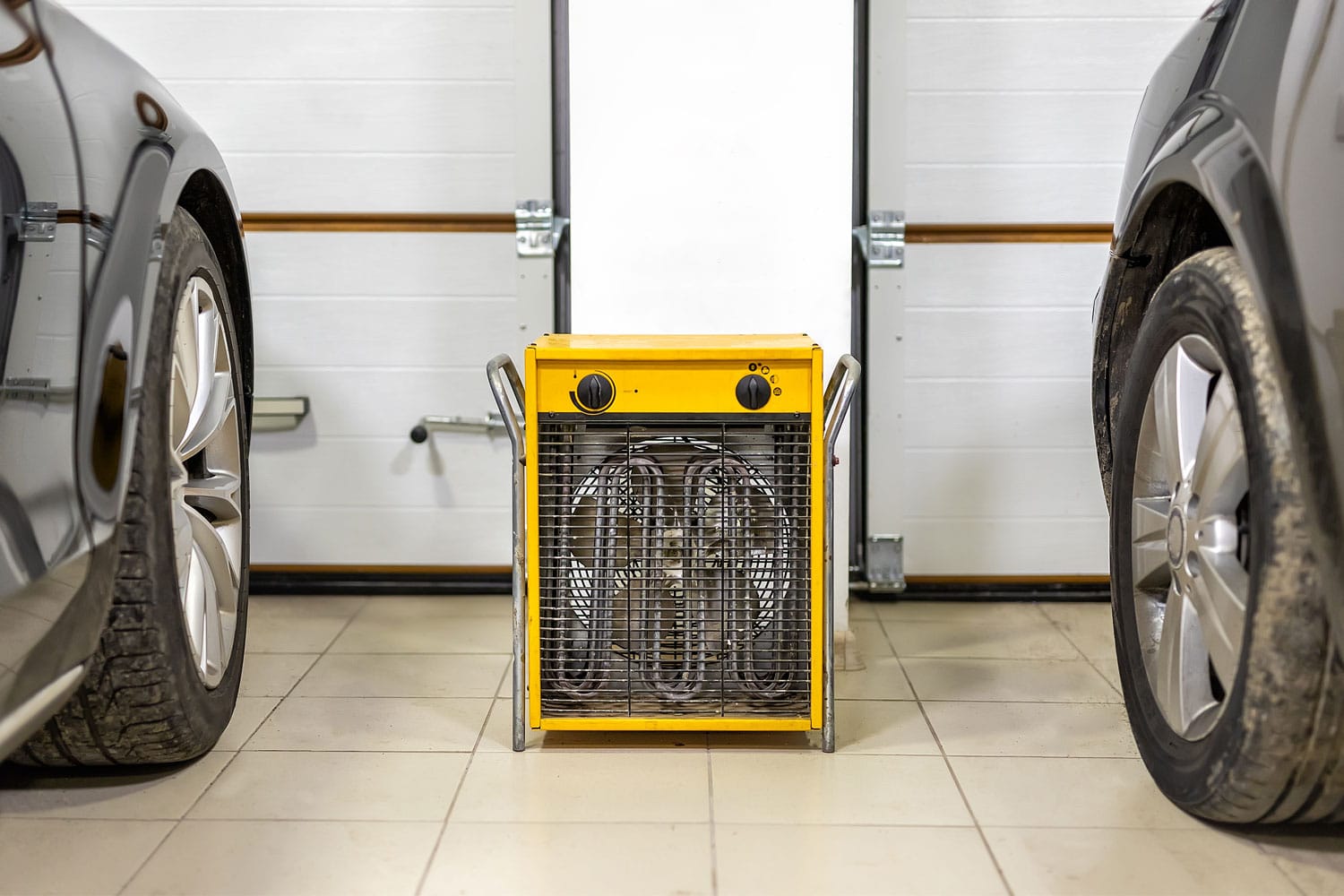
Insulation Installation
If your garage has insufficient insulation and weather-stripping and you use it frequently during the heating season, your energy expenses can easily double or triple. Investing in insulating your space will reward you with 20% savings on energy costs in the long run.
In insulating your garage space, pay attention to these details:
- Make sure the windows in a garage that will be insulated in the winter have the same thermal resistance as the windows in your home. Insulated glass with two or three panes filled with inert gas is the finest option.
- The best R-values will be found in steel, aluminum, or fiberglass doors with polyurethane foam inside. A garage door with an R-value of 10 to 12 is recommended by most experts for a heated garage.
- Because drafts are the most common source of energy loss, inspect the weather-stripping along the bottom of the primary garage door.
- Insulate the areas between the rafters and trusses and finish the ceiling with wallboard to reduce heat loss.
Gas and Liquid Fuel Heaters
Several liquid-fueled space heaters can be used safely in a garage, including kerosene, liquid propane, and natural gas. Now, here are two basic kinds of these heaters:
- Freestanding space heaters
- Direct-vent space heaters
Freestanding Space Heaters
Portable and affordable, kerosene or propane-fueled freestanding space heaters are only good for heating small spaces. Always remember, when utilizing a freestanding liquid fuel heater in an enclosed room, exercise extreme caution; many safety experts advise against it.
Click here for this product on Amazon
Direct-vent Space Heaters
These heaters, on the other hand, can be excellent options for heating the garage, particularly if your house is already wired for propane or natural gas, which powers your furnace, stove, or gas fireplace.
Direct-vent garage heaters use a conduit in the wall to exchange combustion air and exhaust fumes, removing the risk of carbon monoxide poisoning.
Click here for this product on Amazon
Wood Stoves
Under some conditions, a wood burner can be a great alternative for heating the garage, especially if you have a consistent, low-cost supply of wood. However, there are several limitations to using a wood stove. These caveats include:
- There should be enough distance between the stove and any combustible surfaces for a safe installation
- All wood burners must have suitable chimneys attached to them.
- A wood stove takes a long time to heat up and will continue to generate heat even after you've stopped feeding it fuel, so it's not a suitable choice for rapid heating.
Always remember to never burn pressure-treated lumber or pieces of sheet material containing chemical resins. Burning these materials releases toxins that are hazardous to human health and the environment.
Electric Heaters
The convenience of electric heaters is its greatest advantage. These heaters are quiet, clean, and unobtrusive, and they don't require a furnace or boiler. They also don't require chimneys or vent pipes.
Electric heaters are generally affordable to buy and install, but they can be costly to run continuously, particularly in really cold climates.
This type of heater comes in 3 types:
- Convection heaters
- Radiant heaters
- Combination heaters
Convection Heaters
Classic space heaters, convection heaters warm and circulate the air in a room using the natural processes of convection currents, which allow warm air to rise and chilly air to sink.
Click here for this product on Amazon
Radiant Heaters
This heat objects in their immediate area, including people, but not the air. This is a decent option if you need heat quickly, but it is unsafe because it can burn people or pets, and it can cause a fire if used too close to flammable things.
Click here for this product on Amazon
Combination Heaters
By using a fan to spread the heat produced by radiant coils, combination heaters combine the benefits of both radiant and convection heaters.
Central HVAC Extensions
Adding ductwork into an attached garage can also be used to extend the system via which your central furnace and air conditioner heat and cools the remainder of your house.
However, because this might significantly alter the strain on your HVAC system, it's better to hire a professional to assess the issue and install the additional ductwork if you choose this path.
What Elements Influence Your Heating Requirements?
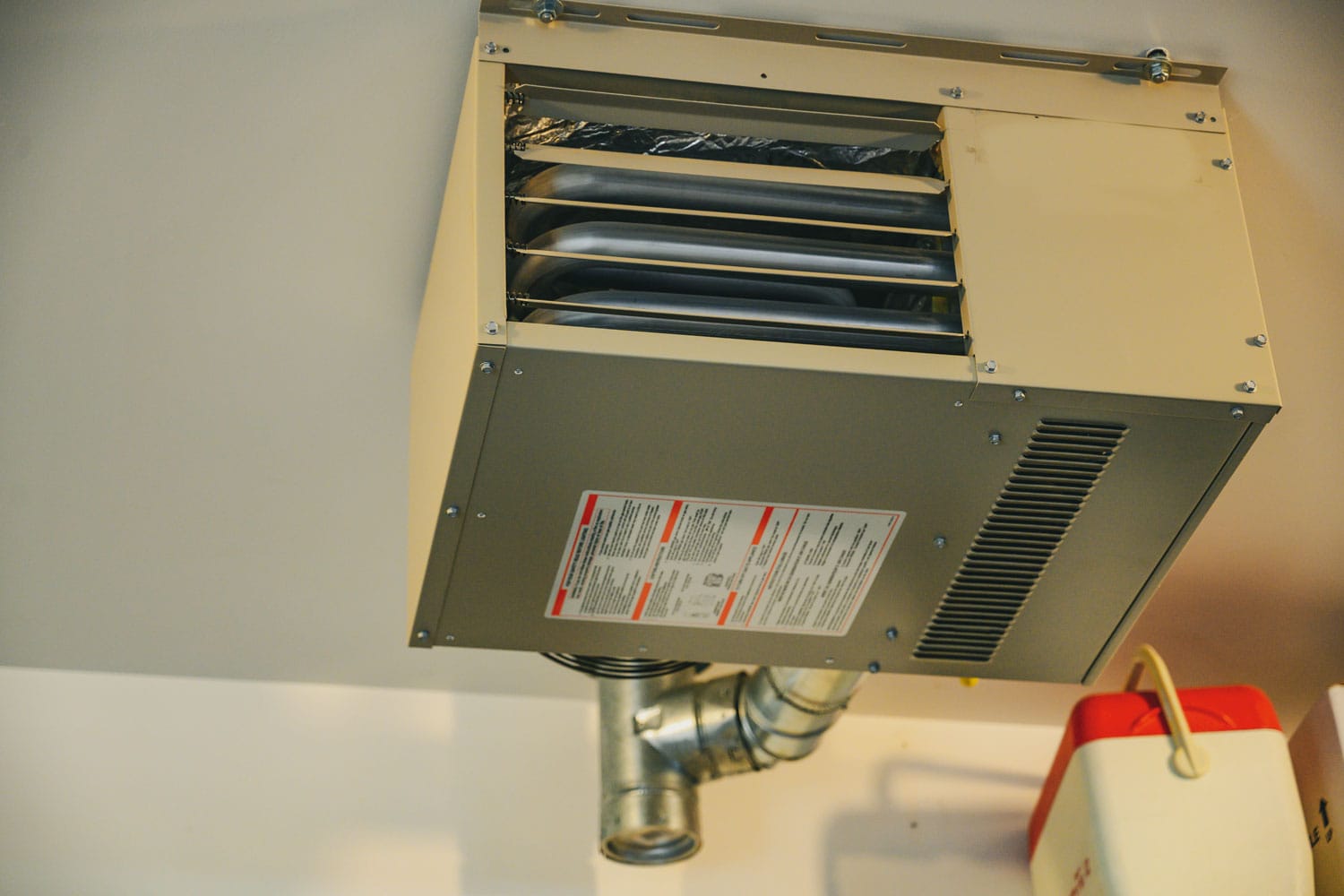
These are the factors that can influence your garage heating needs:
- Weather and climate
- Garage area
- Material and quality of building
Weather And Climate
The colder or warmer the outside air is, the more energy it takes to change a building's inside temperature. You may determine a rough estimate for your home after you know your climate zone and the appropriate BTU requirements for your area.
Garage Area
Space, both in terms of square footage and cubic footage, is another factor to consider when evaluating your energy requirements. Naturally, the larger the space, the greater the requirement; nonetheless, it is critical to avoid the "more is better" mentality.
Material And Quality Of Garage
The quality and kind of building materials, as well as the home's age, have an impact on this assessment. Additional windows that let in more light or cold air, as well as the installation of insulation throughout the garage, alter the calculation.
Heat capacity will be required in older homes that are drafty or poorly insulated.
Questions To Ask Before Heating Your Garage
Before setting up and installing your garage heaters, you must first ask these questions to yourself:
- How Do You Make Use of Your Garage?
- Is Your Garage Well Insulated?
- Are There Exposed Pipes?
- What Heating Options Do You Have?
How Do You Make Use Of Your Garage?
This question can help you with the rest of your decision-making. You probably won't need to heat the garage if you use it to store summer gardening equipment. You may need some heat if you have climate-sensitive belongings or an automobile in storage.
Is Your Garage Well Insulated?
During the winter, a well-insulated garage can store some of the heat that your house allows in. While it won't keep you as warm as your living room, cellar, or any other interior space, the better insulated your garage is, the less likely you will need to heat it.
Are There Exposed Pipes?
When the temperature drops below 20 degrees Fahrenheit, pipes might freeze. In an unheated garage space, exposed, uninsulated pipes can freeze, break, and cause catastrophic damage.
A garage-heating system is a simple solution to lessen the risk of freezing and plumbing problems. While extending your home's heating system into the area may cost money, burst pipes may cost you more.
What Heating Options Do You Have?
In deciding the garage heater to use, it is also important to know what heating options you have. You have to determine what heating option is conducive to your garage area.
What Are The Benefits Of Heating Your Garage?
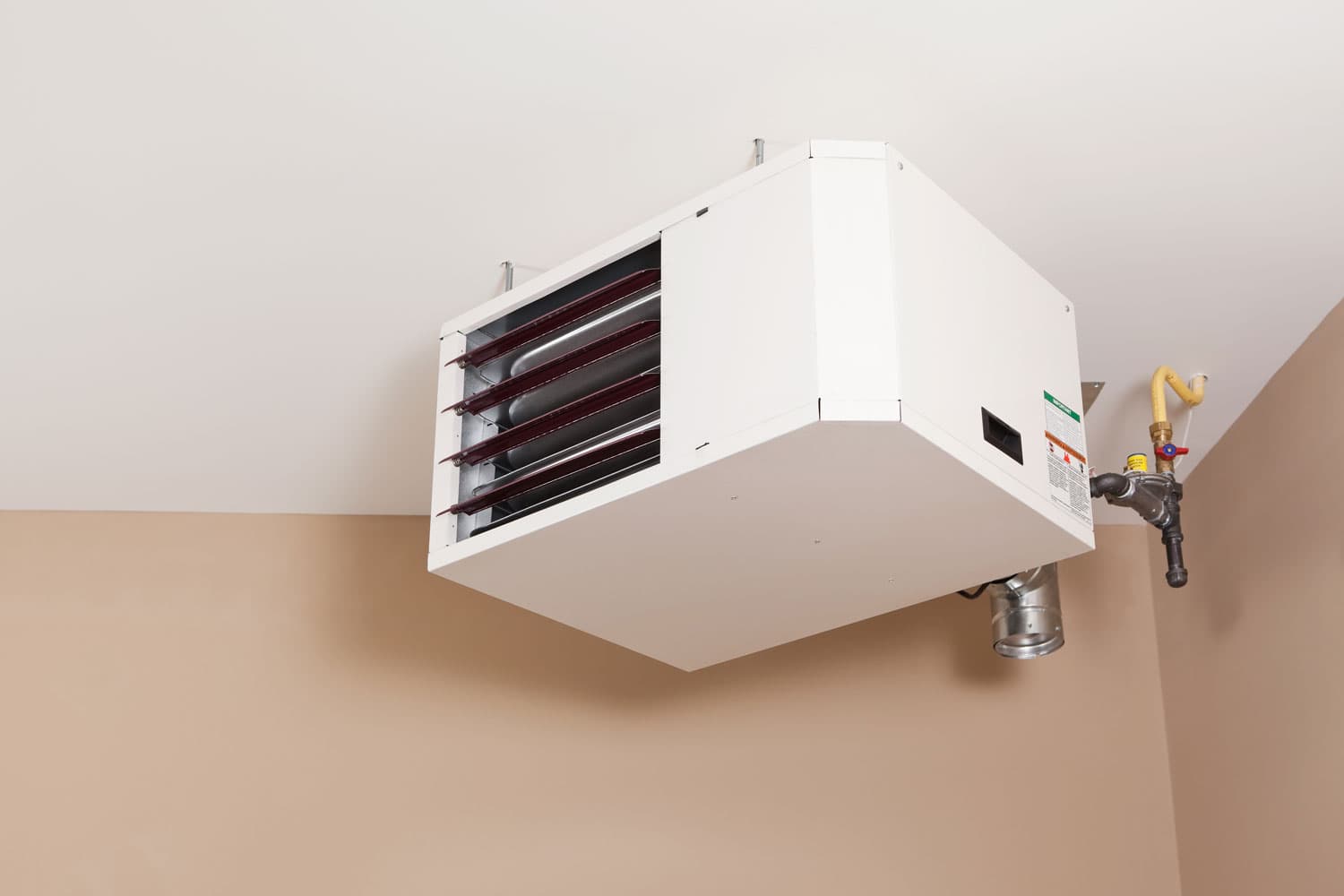
To help you decide if you should proceed with heating your garage, here are some benefits of having a garage heating system:
- You may convert your garage into a comfy workstation without wasting electricity or incurring significant energy costs.
- Designed expressly for the unique issues that come with heating garage spaces.
- You'll be able to work on tasks all year, and you'll be less likely to put them off to avoid the cold.
- You may use your garage space to store temperature-sensitive items like clothing, books, and leather furniture by heating it.
- A garage heater keeps you warm while also making your vehicle safer and more comfortable.
Final Words
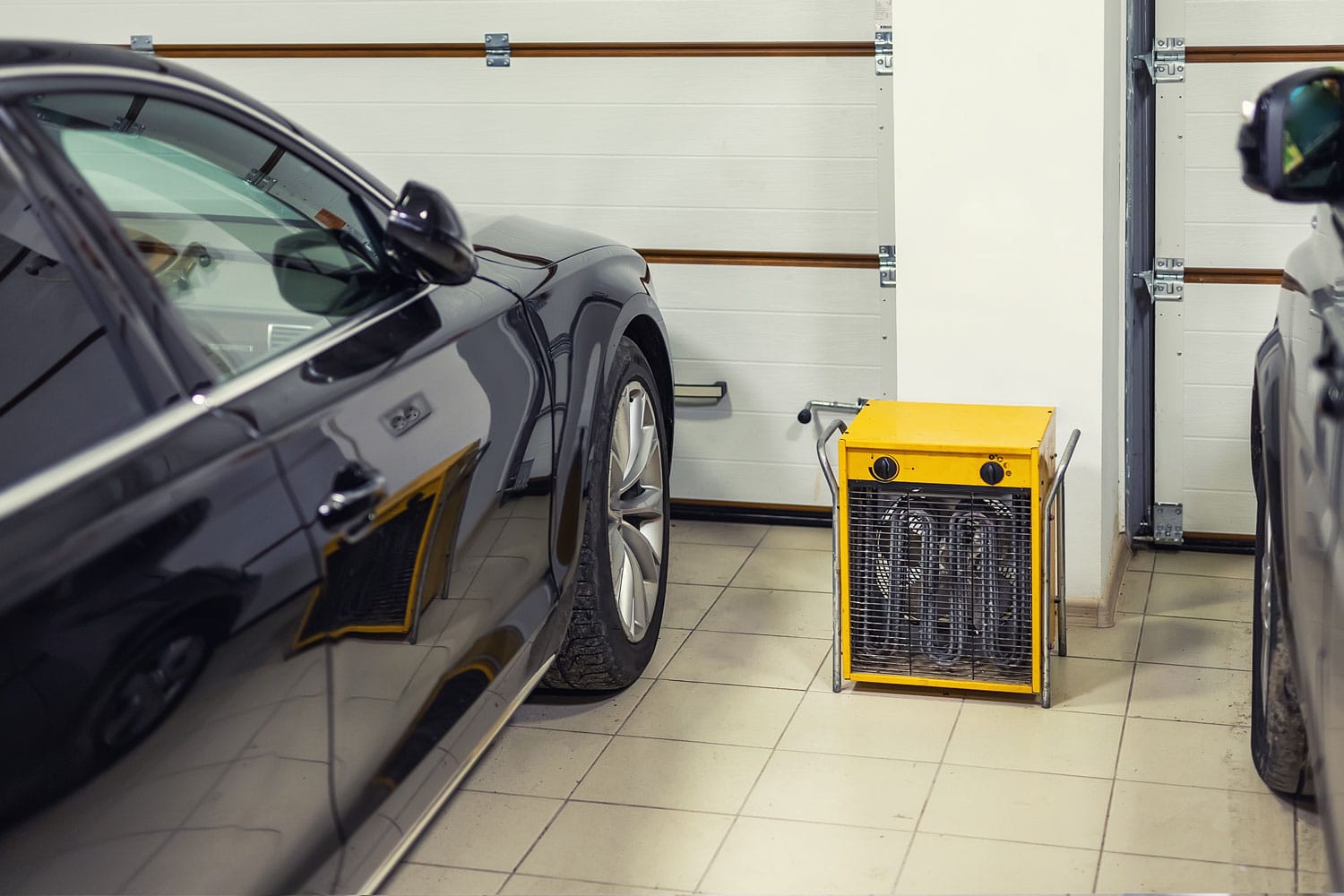
To reiterate, the BTU requirement for different regions with different climates varies, ranging from 7,500 BTU at a minimum and 60,000 BTU at a maximum. Although, there are still other factors that might influence these numbers.
Also, before deciding what heating system to use, make sure that your space needs heating in the first place to avoid additional energy costs.
Before you go, you can check these related articles to learn more about garage heating:




